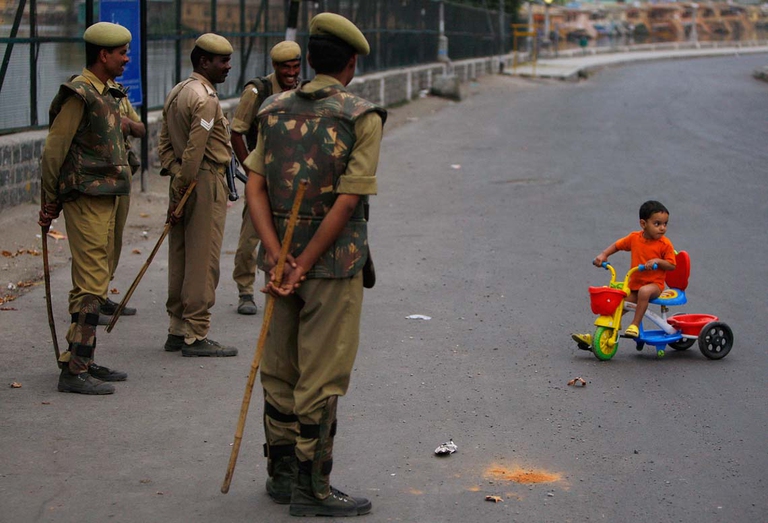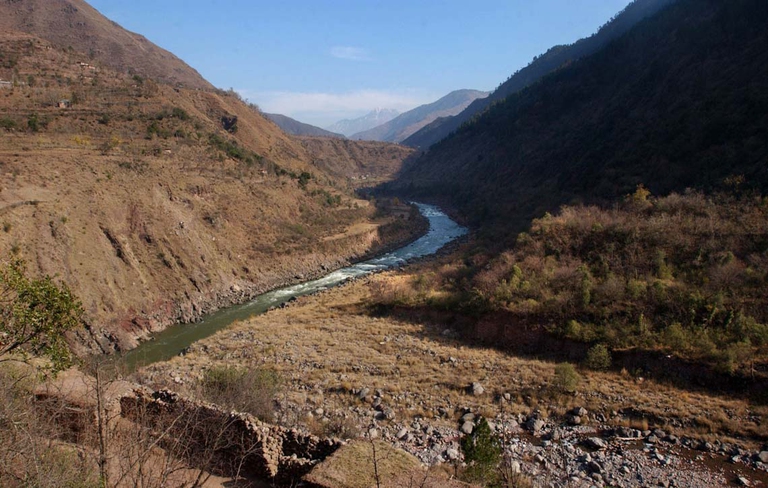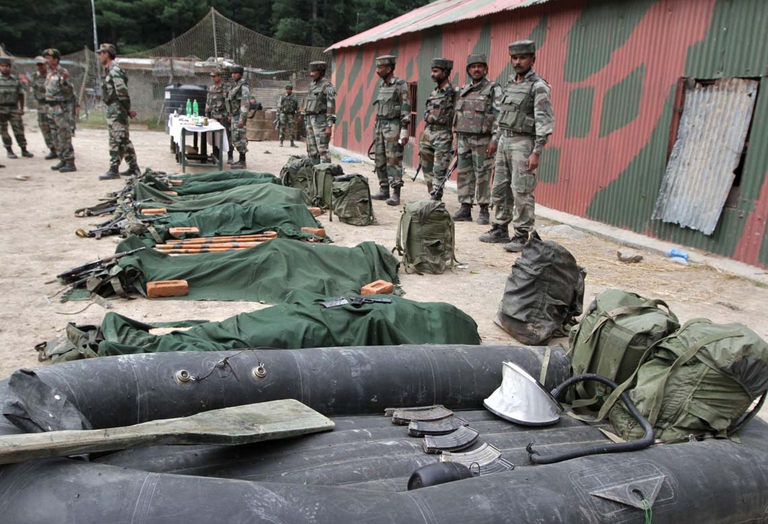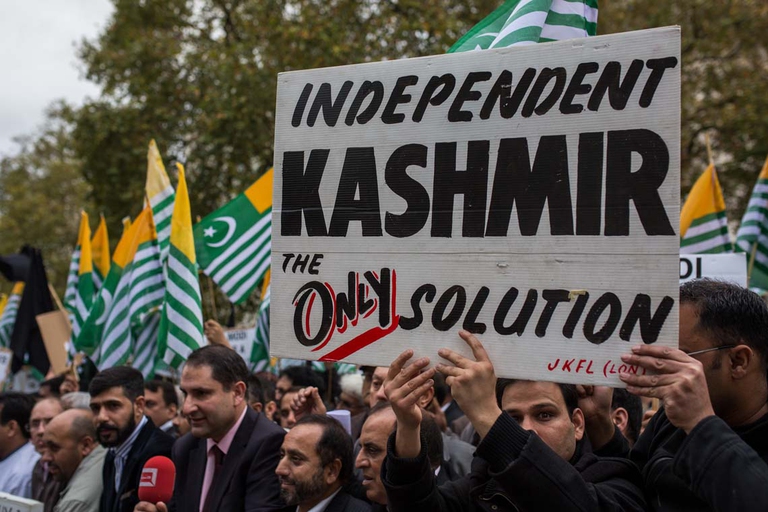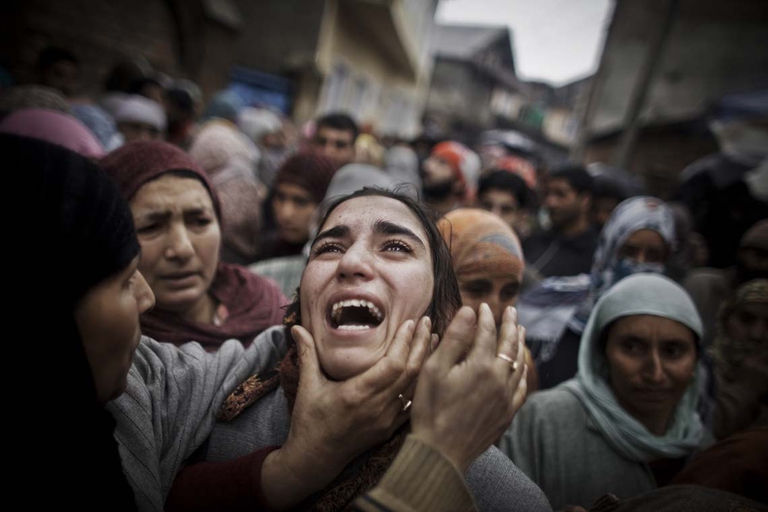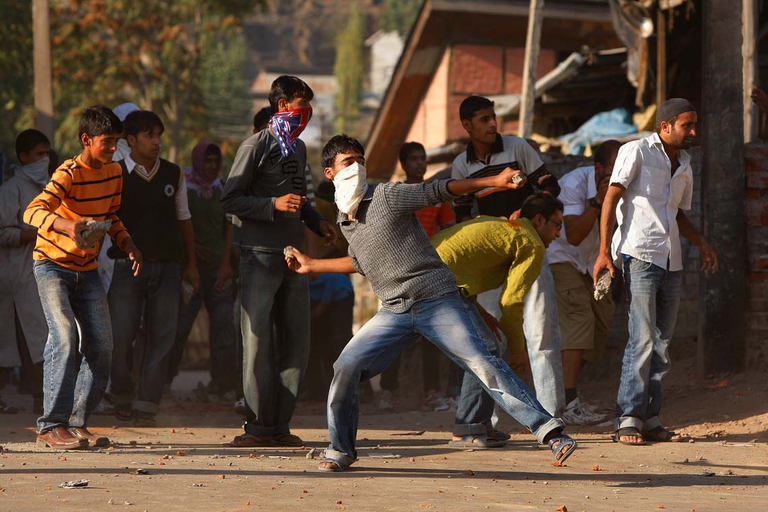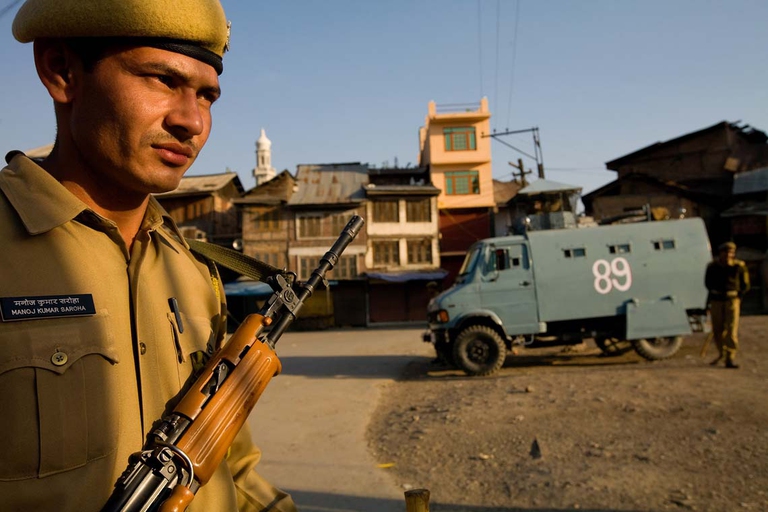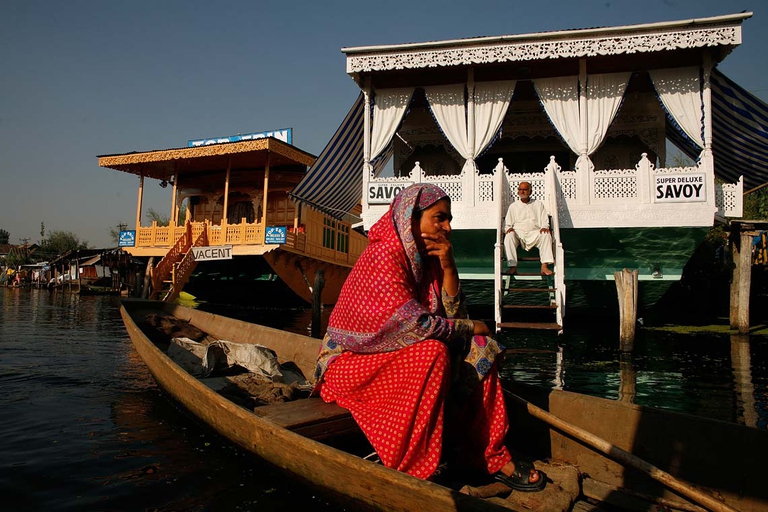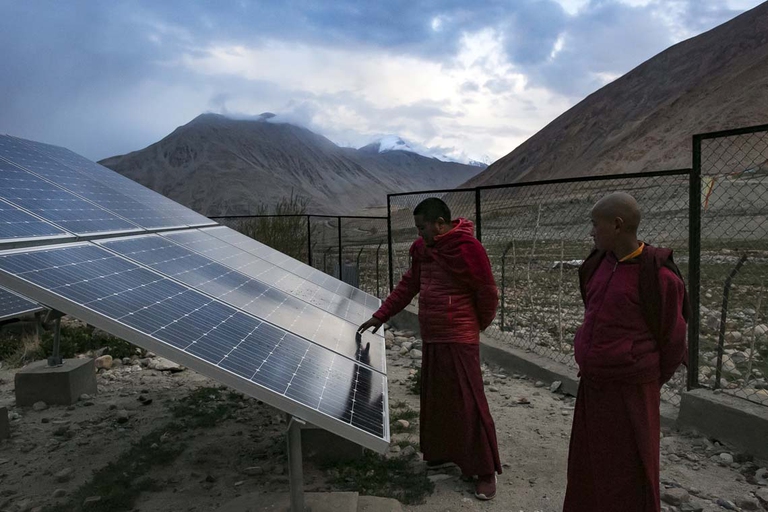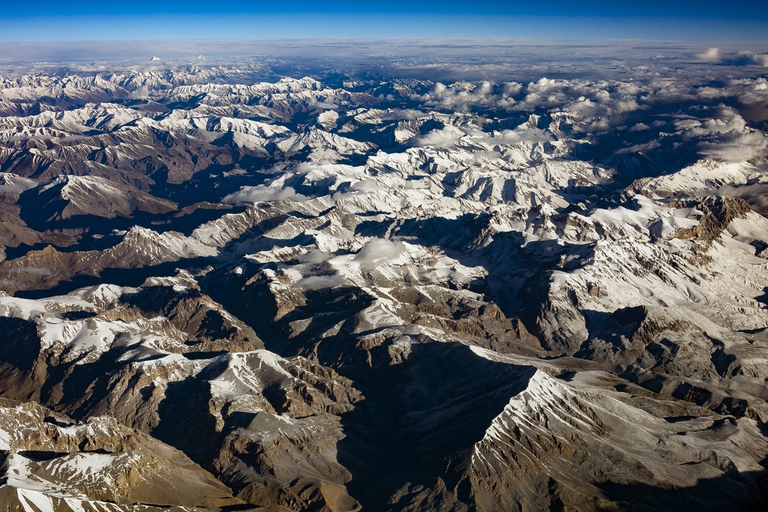
As per tradition after 12 years India held Mahakumbh, the world’s largest spiritual congregation that has been attracting pilgrims from across the globe.
From the origins of the conflict in Kashmir to the escalation of violence over the past two years. The territory contested by India and Pakistan is stilled marred by tensions and abuse.
“Immensely beautiful and tragic,” is how one of the most famous experts on Kashmir, Victoria Schofield, describes the territory. The author and historian, a friend and once fellow student at Oxford University of former Pakistani Prime Minister Benazir Bhutto, is right in her description: having travelled for decades across the large Himalayan territory violently contested between India and Pakistan in several past conflicts and still divided into two areas of influence, she has come across both pain and joy. The pain is that of the Kashmiri people who don’t live in peace and don’t feel in charge of their own destinies, and the joy, which becomes pride, derives from living among the beauty of rare and magnificent mountains, glaciers, rivers and lakes, although these are evermore threatened by urbanisation and climate change.
2018 was the bloodiest year in Kashmir since 2009. A large fraction of the over 400 deaths were caused by the Indian security forces. Caught in the crossfire between Indian soldiers and Pakistani insurgents, civilians often paid the terrible price. The resurgence of the conflict began in summer, two years earlier. The UN High Commissioner for Human Rights holds the Indian Army responsible for excessive use of force and the death of at least 145 people between mid-July 2016 and March 2018, as stated in the latest (and only) report compiled over the last 70 years. Over the same period, according to the same UN report, armed groups assassinated at least 20 individuals.
Kashmir is the theatre of an unresolved conflict, much like the one between Israel and Palestine that seems endless. Since the division of India and Pakistan in 1947 following the departure of the British, the colonial ruler, it seems that negotiations, diplomatic missions and ceasefire accords have had little effect. Today, two thirds of the region is under Indian administrative control (Jammu and Kashmir, abbreviated J&K, and Ladakh provinces), while the other third is administered by Pakistan (Azad Jammu and Kashmir, also known as AJK, and Gilgit-Baltistan). The frontier between these territories, not recognised at the international level, was established in 1949 and is known as the “Line of Control”. It’s reminiscent of the one between the two Koreas, a heritage of the Cold War. Control over the Indian side of J&K, however, is still disputed between the two South Asian powers.
Three wars have been fought in the region since independence from the British, in 1947-49, 1965 and 1999. In the late 1980s the Kashmir Valley became the main battleground of clashes between new Islamic anti-government insurgents and the Indian Army. Jammu & Kashmir, whose summer capital (the administrative centre during extended periods of particularly hot summer weather) is Srinagar, is the only majority-Muslim state in the Indian Federation, with a peak of 90 per cent of inhabitants in Kashmir Valley. At play in Kashmir aren’t only the nationalist aspirations of the local population, but first and foremost a clash between two very different nations, in terms of politics and religion: Pakistan, an Islamic republic, and India, predominantly Hindu but, at least formally, a secular democracy.
Since 1989, tensions have been a constant feature of life in Kashmir. The Indian part is one of the most highly militarised regions in the worlds, with 500,000 stationed soldiers, often involved in skirmishes with a rather large number of Islamic guerrilla groups, both local and foreign. Among the local groups are autonomists and separatists, isolated from Delhi as well as Islamabad. The “foreign” groups, on the other hand, are made up of militants born and trained elsewhere (mostly in Pakistan and Afghanistan) in the name of a pan-Islamist ideology, with a particular Kashmiri flavour in this case. These groups have been behind terrorist attacks, supported and often “infiltrated” by Pakistani intelligence (although this has always been denied by its authorities), and their aim is to use the Kashmiri cause as a pretext within the wider confrontation with India.
During the first decade of the new millennium, the West had largely forgotten about Kashmir. Following the terror attack on Red Fort by Lashkar-e-Taiba (LeT) in 2000 and on the Delhi Parliament by Jaish-e-Mohammad (JeM) in 2001, as well as twelve coordinated attacks in Mumbai which caused 165 civilian deaths and over 300 injuries orchestrated by the former organisation on the 26th of November 2008, media attention has been focused primarily on LeT and its ideologue, Hafeez Saeed. Though the attacks were carried out “in the name of the Kashmiri cause”, including the one on the Taj Mahal Palace Hotel in which hundreds of tourists were held hostage and 31 lost their lives, they occurred in Mumbai, over 2,000 kilometres away.
“The proxy warfare that had started in Kashmir in 1947 remains the sheet-anchor of Pakistan’s defence strategy,” Mohammad Taqi, a columnist for Pakistan’s Daily Times, explains in an interview with Al Jazeera. “The quest for the so-called ‘strategic depth’ in Afghanistan (a doctrine through which Pakistan supposedly exerts influence on its neighbour in relation to its tensions with India) is also a manifestation of this phenomenon”. According to many analysts, the intensity of the conflict in Kashmir increases when friction grows between India and Pakistan, both nuclear powers. Following the events of the 26th of November in Mumbai, the Kashmir Valley experienced relative calm. While the first trade path opened across the Line of Control, a hundred young people protesting the government were killed, barely receiving any attention in the news. In addition, several jihadi groups based in Pakistan – LeT, JeM and Harkat-ul-Jihad-Islami (HuJI) among them – supposedly started to regroup, in an attempt to revive the violence seen in the 1990s.
According to Khalid Shah from the think-tank Observer Research Foundation (ORF), the narrative of jihadi groups such as LeT is “false” in its assertion that the good of Kashmir is their priority. This propaganda is used to justify aggression against India. Of LeT’s members, 89 per cent have been recruited in Pakistan’s Punjab province, and less than 2 per cent are Kashmiri natives. Davood Moradian, professor of politics at the American University in Afghanistan, adds: “Pakistan’s military and political elite see it as a hegemonic country. A hegemon and regional power requires parity with India and domination over Afghanistan”.
Local aspirations of azadi (independence) and a referendum to guise what the Kashmiri people really want have never become reality, as Louis Mountbatten, the first Governor-General of independent India in 1947-48, had suggested. Indigenous local political representatives have never been involved in peace negotiations, as reported by the International Crisis Group (ICG), and the Indian territory has mostly been administered by bureaucrats. Veteran politician Satya Pal Malik is the first governor to be appointed since 1967, but it’s no longer clear whether the people of Kashmir want independence or to be part of Pakistan. Moreover, it’s unrealistic to expect that Islamabad will give up Pakistani land to an independent Kashmiri state, and those who imagine an “azad” nation don’t see Jammu, with its 67 per cent Hindu population, or Ladakh, known as “little Tibet” for its large Sino-Tibetan Buddhist contingent, as being part of it.
The origins of the current tensions have their roots in decolonisation. From 1820 to 1947 the entire Kashmir region was governed by Hindu maharajas from the Dogra dynasty. In 1947, when the British colonisers left the Indian subcontinent, the last maharajah, Hari Singh, “hoped his kingdom would remain independent. It was a territory unified over many centuries by a common language, Kashmiri (a Dardic language spoken in India and Pakistan), but it was also made up of many micro-identities with their own dialects,” explains Elisa Giunchi, lecturer in the history and institutions of Muslim countries at Milan University. “It’s a complex territory in terms of religion, given the coexistence of Islam, Hinduism and Buddhism, and ethnicities. If the principles of the partition had been honoured, with Muslim-majority regions going to Pakistan and Hindu-majority ones to India, Kashmir Valley would’ve been annexed to Pakistan. But this didn’t happen. In the spring of 1947, Singh was faced with a Muslim insurrection in Poonch and lost control of the western territories of his kingdom. And, in October, when Pakistani tribal militias attempted an invasion of the valley, he asked for India’s help to stop them. Singh continued to govern over what remained of his kingdom, but in exchange for his request for assistance he was forced to sign off annexation to India”.
Back in 2015, several analysts started observing an increase in radicalised militants among younger generations, who have never known times of stable peace. Youngsters today have always lived alongside soldiers and experienced the constant risk of abuse, either targeting them or those around them. The resentment generated by this dire situation has been exploited by anti-government groups to train a new generation of insurgents. In July 2016 Indian security forces killed Burwhan Wani, the 22-year-old leader of the Hizbul Mujahideen group, founded in Kashmir in 1989 and formerly linked with Pakistani intelligence services and Afghan warlord Gulbuddin Hekmatyar.
“Wani was very popular and had a strong social media presence, and it’s estimated that 200,000 took part in his funeral – explains Antía Mato Bouzas, researcher at the Leibniz-Zentrum Moderner Orient in Berlin, a major expert in matters related to the conflict –. His death sparked anger among the population”. Many young men returned to the practice of throwing stones against the “Indian occupants” as part of their own “Kashmiri intifada” (popular rebellion). The researcher recalls that “already starting in 2010 many young people mobilised in violent ways such as the ‘stone pelting movement’, however many also used non-violent practices, taking on places of merit on matters regarding the relationship with the Indian state”.
It’s at these times that Indian forces make heavy use of pellet guns: “They were supposed to be non-lethal weapons shot aiming away from vital organs and used in order to minimise deaths. But the soldiers aim higher, at people’s heads, and from close distances”. This is how Camillo Pasquarelli, an Italian photographer who was in Srinagar to finish his anthropology dissertation, starts his dramatic story. Last September, Time magazine published a report about the victims of pellet guns, using Pasquarelli’s photographs. “I’ve gone back every year since 2015, most recently in August 2018. Shooting portraits of the people who have been left partially or completely blind takes time. People only started speaking up after a whole year had passed since the beginning of protests and repression”. Pasquarelli photographs his subjects in front of a black background, representing the darkness that surrounds them. Beside them, x-rays show their heads or upper bodies. The images are peppered with white dots, the pellets that will remain inside them forever.
Between July and December 2016, pellet guns injured over 6,000 people. Of these, 782 suffered permanent damage to their eyesight, according to Amnesty International. However, the BBC reports that to date this number is closer to 3,000. The main problem is that pellet guns continue being used. On the 23rd of November 2018, Heeba, a 19-month-old infant, became the youngest recorded victim whose eyes were hit by pellets. Because of clashes in her neighbourhood between soldiers and militants, tear gas filtered into the house where Heeba was having breakfast with her mother and 5-year-old brother. She started vomiting and her brother couldn’t breathe. When their mother took them out of shelter, Heeba was hit by a pellet.
“According to data supplied by Greater Kashmir, a regional newspaper with a good reputation in the valley, it’s estimated that since the repression in 2016, 130 people have died, 14,000 have been injured (over half by pellet guns) and 7,000 have been incarcerated through the Public Safety Act,” adds Bouzas. The analyst, who recently visited Pakistani Kashmir, explains: “This repression counters the policies of recent Indian governments, and normalisation policies pursued by Jammu and Kashmir state. The deterioration can be traced back, in part, to the change in the J&K government in 2014. In the same period, heightened tension was recorded along the Line of Control”.
“Responsibility is proportional to the degree of power one exercises,” this is how Bouzas, who has spoken to families divided by the conflict, comments the human rights violations: forced disappearances, killings, arrests and trauma. The Association of Parents of Disappeared Persons (APDP) has calculated that somewhere between 8,000 and 10,000 cases of Kashmiri “desaparecidos” have occurred since 1989. The victims’ relatives take to the streets on the tenth of every month to demand answers about their missing loved ones. They recall that the crimes against humanity have mostly been perpetrated by security forces at the border, as well as by soldiers and the Indian police. “We don’t want money or compensation. We just want our children back. We’ll continue protesting until we know where they’ve gone,” they chant, in unison.
According to Indian activist Iffat Fatima, whose documentary Blood Leaves Its Trail was recently shown at the human rights film festival in Naples, no solution to the conflict exists without demilitarisation. However, for Bouzas the prospect of peace now seems even more remote than it was in the past: “It would’ve been easier to reach an agreement between India and Pakistan before, compared to today. The nature of the political leaders in power is relevant: Imran Khan came into office in August and says he wants to open a dialogue with India. Narendra Modi’s government (representing the Hindu fundamentalist party BJP) has claimed that it wishes to enter a process of dialogue with Pakistan, but its attitude isn’t particularly credible. Both leaders reflect a rise in nationalist movements that, within their different contexts, share many similarities with those that have gained popularity in Europe and the US in recent years”.
There can be no peace without demilitarisation, but also without the participation of the Kashmiri people. “I believe that to hypothesise a solution to the conflict in the current situation is also very difficult because the Indian state has so far never seemed prepared to face the issue of victims,” Bouzas insists. “The resolution of the conflict can’t simply come from an agreement between states; consensus must be built among the people involved in the struggle, both in the Indian and Pakistani territories of Kashmir”.
“The sources of several important rivers that flow into Indian as well as Pakistani Punjab are located in Kashmir”, Giunchi reminds us. “Indian plans to build dams would deprive Pakistan of water resources needed for agriculture”. The disputes over so-called “blue gold“ are confirmed by the International Crisis Group: “India, with its larger population and exponential growth in energy needs, uses a lot more shared water resources. Its domestic needs are growing, while Pakistan (still a largely rural nation) is ever more dependent on these for its agricultural sector. The issue of Indian dams along the Indus River is crucial both for the army and jihadists”.
The threat of climate change, set to impact the Indus’ immense river basin that extends across four countries – China, India, Afghanistan and Pakistan – further complicates the picture. The glaciers of the Tibetan plateau, from which the river originally flows, are melting. “The tourist season has become longer, in 2018 it extended until November because of the prolonged heat,” Marco Vasta, born in 1949, with numerous publications and countless journeys to the Himalayas, Karakorum and Tibet under his belt, reports. “I’ve been going to Kashmir since the 1980s, mostly Ladakh. I no longer take groups to Srinagar due to its militarisation. It’s also become enormous, overhauled by urbanisation. Even Leh, Ladakh’s capital, is modernising, but less so. More balance is required. Of course, these places need services: reaching the remote areas of Zanskar means walking for four days, so plans are being made to relocate the inhabitants further down the valley”.
According to reports, tourism in 2018 significantly decreased because of violence in Jammu and Kashmir. Hotel bookings fell by 10-15 percent, following a 40 percent plummet in 2017. “Whilst this is a real trend, it must be considered that tourism primarily comes from India. There are few foreigners and Westerners,” Vasta goes on. “Usually wealthy Indians go to Srinagar first, to stay in the old houseboats, then they come to Ladakh. Sadly, this ‘pay and expect’ type of tourism, with no attention towards sustainability, greatly contributes to pollution. Campsites built on a lake have had to be dismantled, and it’s rumoured that Tesla plans to build three waste incinerators”.
In the meantime, the fierce snowfalls that followed the unusual heat destroyed many of the local orchards. In southern Indian Kashmir, 20 percent of the harvest was lost. In a state where poverty rates are lower than in the rest of India, 2.5 out of 7 million people depend, directly or indirectly, on horticulture. For some farmers the weather’s effects were catastrophic. In this context, the youth seem even more broken, with some seeking fortune in India, hoping to find a job or continue their studies, while others stay home and join the ranks of the militants.
Siamo anche su WhatsApp. Segui il canale ufficiale LifeGate per restare aggiornata, aggiornato sulle ultime notizie e sulle nostre attività.
![]()
Quest'opera è distribuita con Licenza Creative Commons Attribuzione - Non commerciale - Non opere derivate 4.0 Internazionale.
As per tradition after 12 years India held Mahakumbh, the world’s largest spiritual congregation that has been attracting pilgrims from across the globe.
Workers in tea gardens of West Bengal, India, that produces Ctc tea for domestic consumption complain that they have been devoid of basic facilities while political parties make hollow promises during every elections which are never fulfilled.
India is in the middle of the elections, but sadly none of the politicians have uttered a word on man-animal conflict that has been devouring several lives every year.
Manipur, a state in north-east India, is still reeling under the tremors of violence that broke out last year devouring lives and paralyzing the economy.
The government of Tanzania is currently planning to evict more than 80.000 indigenous Maasai people from their ancenstral land
A new UNU-INWEH report on the global bottled water industry reveals the massive scale of this market and the lack of strict quality controls.
Isatou Ceesay founded a social enterprise that is helping to fight plastic pollution and empowering women and young people to gain economic independence.
In 2020, Mihela Hladin made a radical decision that many, in recent times, have probably considered. This is her story, with photos by Matt Audiffret.
The Brazilian government has started evicting illegal gold miners, responsible for the health emergency that has hit the Yanomami people.
